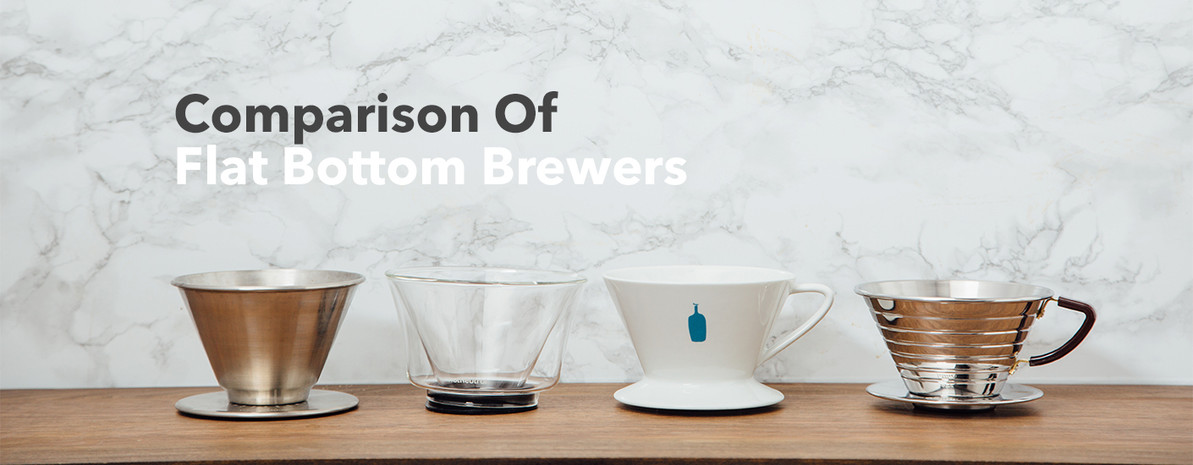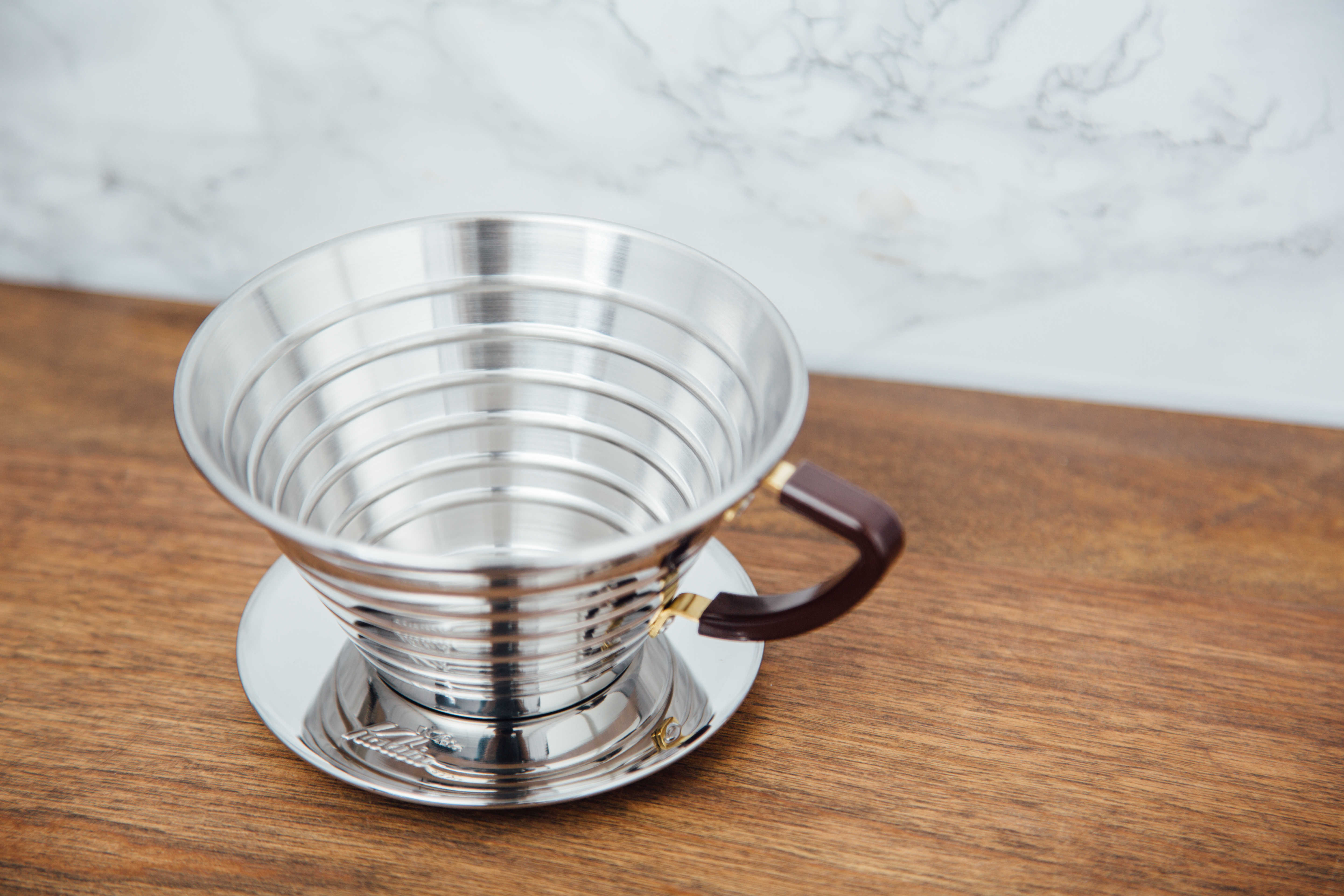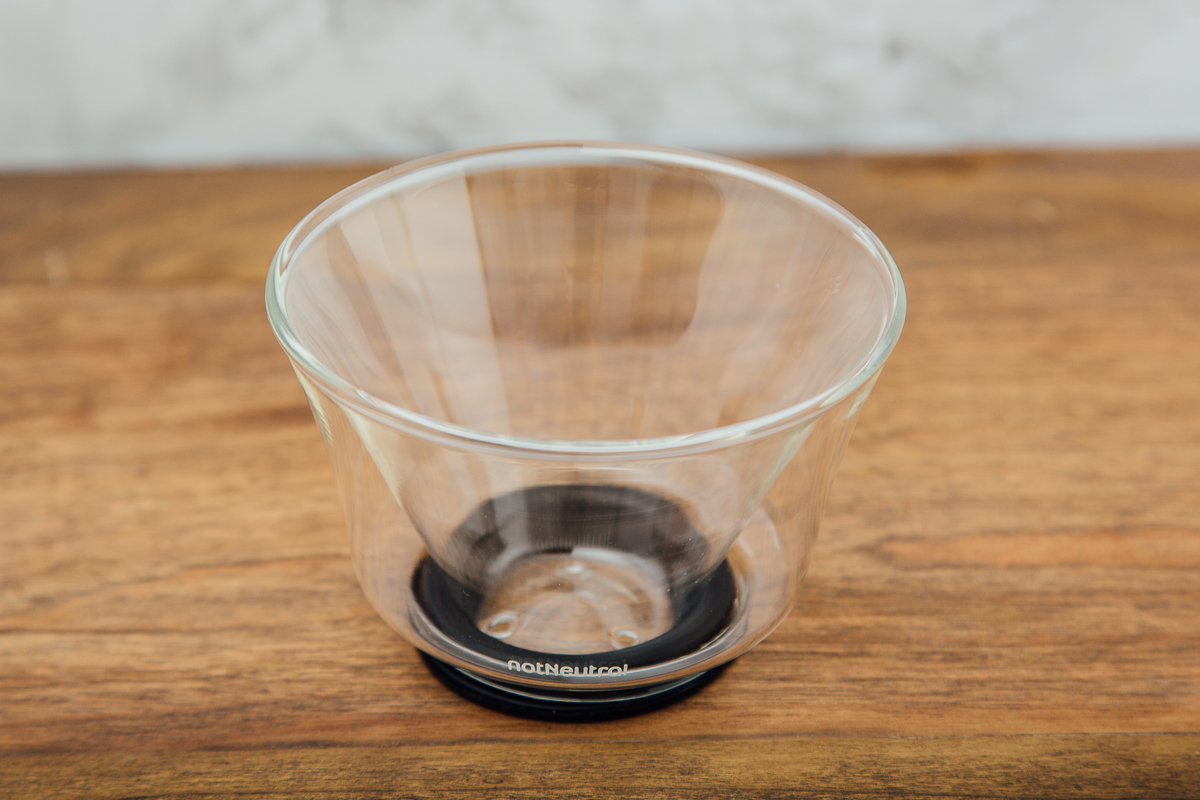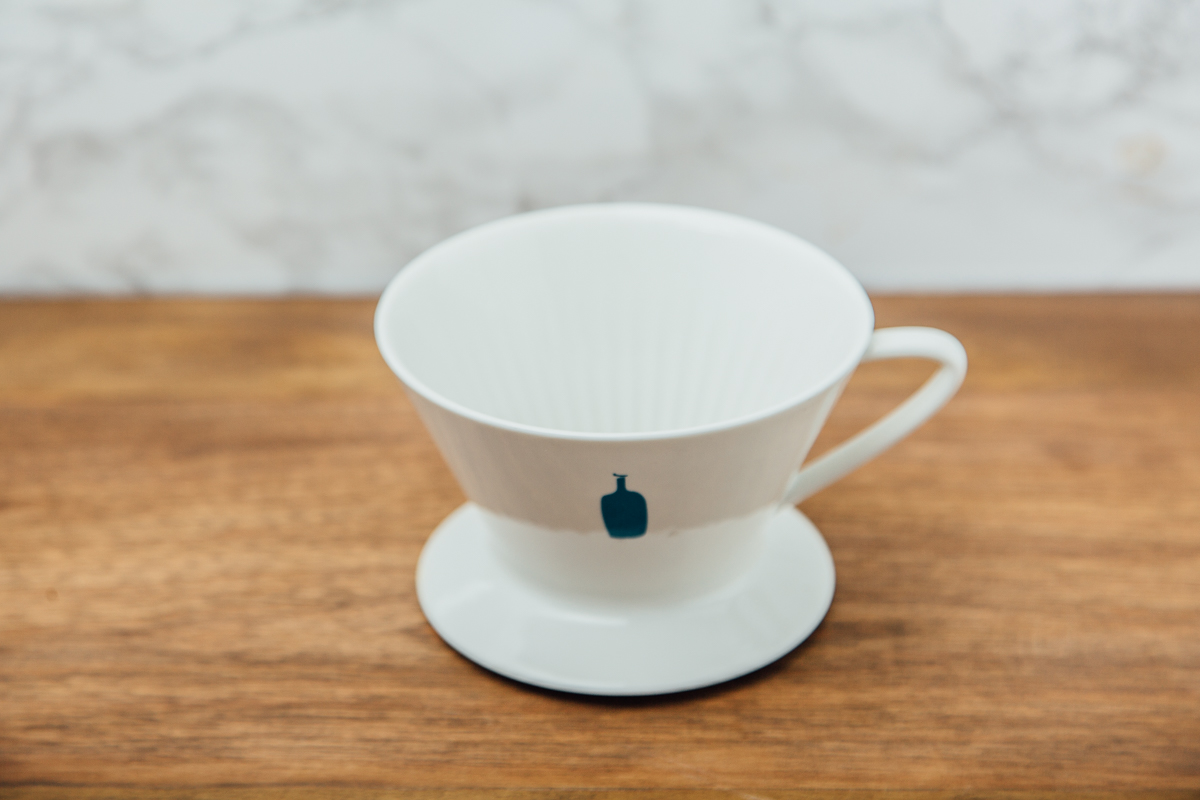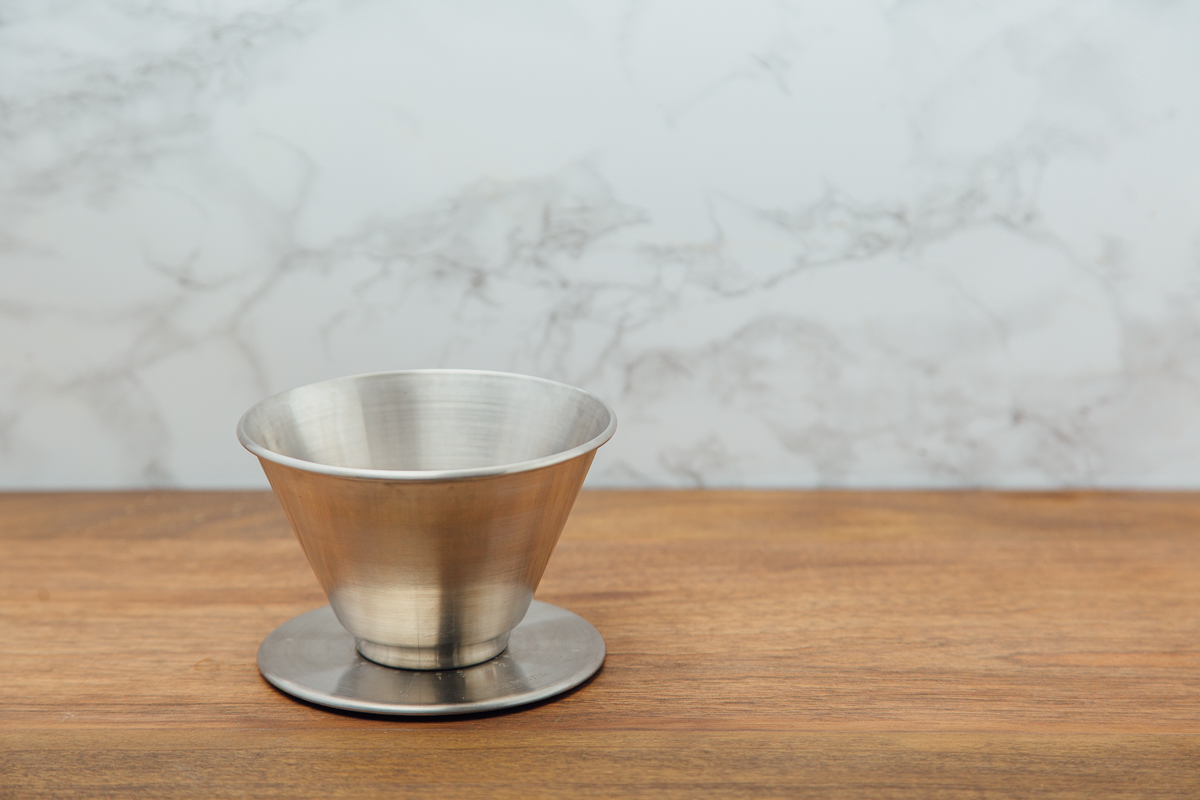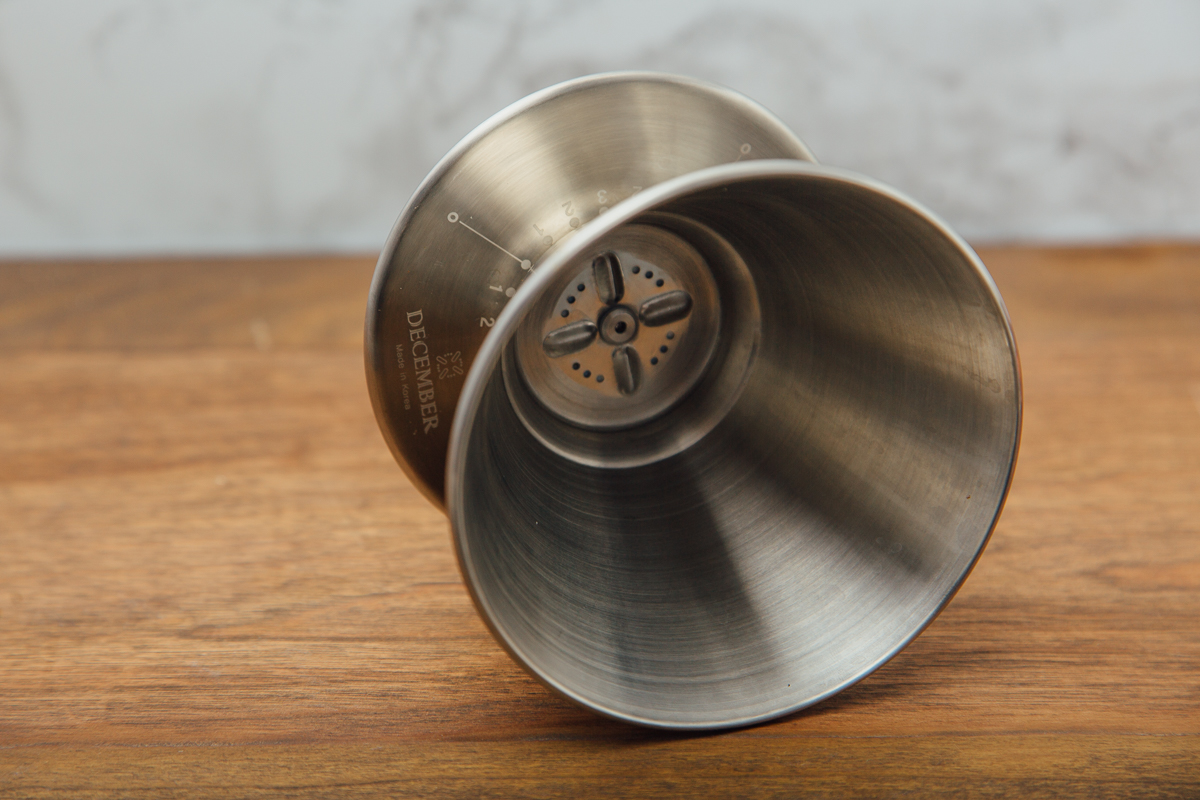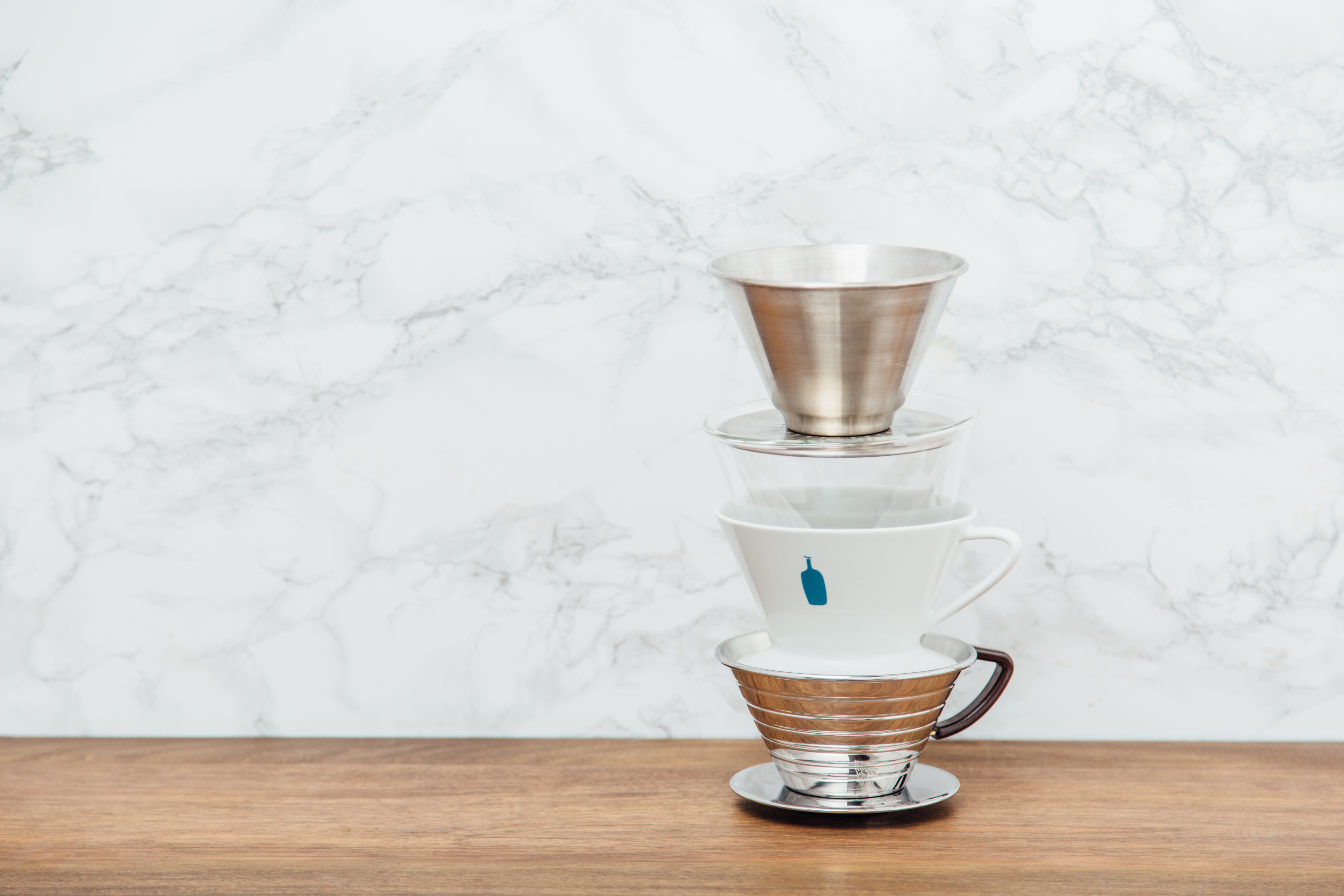Guest Review: Flat-Bottom Coffee Drippers
It’s a gilded age for flat-bottom coffee drippers, and in this comparison guide, guest reviewer Michael Butterworth walks you through four of today's top contenders: the Kalita Wave, notNeutral Gino, Blue Bottle Dripper, and December Dripper.
It’s a gilded age for flat-bottom coffee drippers. Over the last five years, these brewing devices have slowly been edging out their conical cousins, both in cafés and in the kitchens of home brewers. Lauded for their even bed depth, proponents of flat-bottom drippers argue they offer a more even (i.e. sweeter) extraction. Because the brew time has more to do with the drain rate and less to do with the pour rate, flat-bottom drippers also offer a shorter learning curve than other manual brewing devices, albeit at the expense of barista control.
There have never been more pour-over drippers on the market, and navigating the subtle differences between different brands and models can be confusing. To lend a helping hand, I selected three of the most popular flat-bottom drippers on the market and one new prototype and put them to the test.
Kalita Wave 185
If there’s one device responsible for shifting the pour-over market from conical to flat bottom brewers, it’s the Kalita Wave. The Japanese-made Kalita Wave comes in glass and ceramic, but I’m a fan of the stainless steel model for its durability. Stainless steel also has less mass than ceramic, which means less energy is going to be absorbed by the dripper and more will stay in your slurry, extracting soluble compounds from your coffee.
The bottom of the Kalita Wave features three small holes separated by a Y-shaped ridge. More ridges line the side of the dripper, helping keep the filter from sticking. They also serve as a helpful volumetric reference point. (I use a pulse method of brewing, filling the dripper to the third ridge from the top with each pulse).
For me, the Kalita Wave is the Toyota Camry of flat bottom drippers. It’s not flashy, but it’s dependable, consistent, and affordable. At $40 each, the Kalita Wave is not the cheapest device on the list, but I’ve never heard of somebody having to replace one. A café looking to stock a brew bar would do well to choose this device.
I think the sweet spot with this dripper is with dose between 20 and 30 grams, though I’ve brewed with as much as a 45 gram dose or as little as 15 grams. For this dripper I like a medium-coarse particle size and 4-5 minute brew times.
NotNeutral Gino Dripper
NotNeutral originally disrupted the coffee industry with their postmodern Lino coffee mug. From the disappearing lip to the ergonomic handle, the mug revealed a marriage of form and function seldom seen in a very traditional industry. The Gino Dripper was designed as a compliment to the Lino mug and was released in 2014 to nearly universal acclaim. In addition to taking home a prize for Best New Product at the SCAA Expo that year, it was used by the Brewers Cup Champion. Not a bad first year.
The NotNeutral Gino Dripper differs from the other drippers reviewed in this article in one distinct way: it’s made with double-walled glass. This extra insulation helps with easy handling of the device and ensures a higher slurry temperature than other devices mentioned here. This higher slurry temperature is ideal for lighter roasted and higher elevation coffees, which are less soluble than dark roasts and benefit from hotter water.
My first recommendation for anyone using the Gino dripper is to remove the rubber gasket at the bottom of the device. Although it’s a nice cushion for the glass device, the gasket often creates a vacuum in the cup that prevents the coffee from draining. Without the gasket the Gino Dripper has the fastest flow rate, lending itself to slightly finer particle sizes.
My biggest reservation about the Gino Dripper is its durability. Having worked in a café environment for almost six years, I can testify that glass dishes do not last for long. Compared to the stainless steel Kalita Wave and December Dripper or even the ceramic Blue Bottle Dripper, the Gino Dripper feels far more fragile.
For the home brewer, the Gino is an elegantly designed device that is capable of producing a fantastic cup of coffee. It’s perfect for the home brewer that values form as much as function. At $24 it’s also the cheapest device on this list.
Blue Bottle Dripper
The outlier on this list comes not from a kitchenware company but a coffee roaster. Few companies could pull off commissioning their own brewing device, but Blue Bottle is no ordinary roaster/retailer. The Oakland-based international chain enlisted the help of four engineers who spent over a year making 70 prototypes before bringing this product to market. At first glance the ceramic Blue Bottle Dripper looks similar to the ceramic Kalita Wave, but a closer examination reveals an important distinction.
The Blue Bottle Dripper features a single hole in the middle of the dripper. Every other pour-over device featured in this article has multiple holes evenly distributed around the bottom in a circular pattern. The centered, singular hole is evocative of larger automatic brewers, be it Bunn, Curtis, or Fetco. I was curious if the centered hole affected the evenness of the extraction, and put it to the test.
Brews that I measured revealed slightly higher extractions on the Blue Bottle Dripper (I used the same coffee, dose, grind size, rinsed filter, brew time, and brew water). More testing is necessary to draw any clear conclusions. But I was surprised to find that the cups I brewed with the Blue Bottle Dripper were some of the sweetest, most rounded cups I drank in the course of writing this article.
Perhaps the only downside to the Blue Bottle Dripper is the company branding. As a home brewer, I’m happy to have a Blue Bottle Dripper in my kitchen, but as the employee of a coffee roaster I can imagine customers being confused by a competitor’s product on the brew bar.
December Dripper
After it smashed its Kickstarter fundraising goal, the December Dripper has the coffee world buzzing. Designed by Nick Cho and Youngmin Lee, the December Dripper offers the ability to adjust the flow rate of the dripper by twisting the base. Each setting opens up a different number of the 12 holes that line the bottom of the dripper (0, 4, 8, and 12 respectively). The ability to slow down the flow rate without tightening your grind or changing your dose allows coarser grinds and longer brew times, even with single cup brews.
I found the brewer to have very similar geometry to the Kalita Wave, but the adjustable flow rate is a real game changer. On its slowest setting it’s slower than any of these drippers. On its fastest setting it’s faster. The settings are simple to change on the fly, meaning if your brew is draining too quickly or too slowly you could easily change that. We found a few practical applications of this new technology, but we’re excited to see what creative recipes the home brewer community comes up with using the December Dripper.
The first brewing modification we experimented with was shutting the flow off entirely during the bloom. Starting with the dripper sealed off ensured the coffee grounds were evenly and thoroughly degassed before opening it up and beginning the the rest of the brew.
We used a similar technique to make a higher extraction iced pour-over. A typical iced pour-over, or Japanese iced coffee, is made by substituting half of the brew water with a bed of ice. The result is refreshingly acidic, but a low extraction. By allow the brew to steep for two minutes before draining it on the lowest setting, I was able achieve a higher extraction without changing the water:ice ratio.
The only shortcoming of the December Dripper I found is that after brewing the stainless steel dripper can get very hot and be difficult to handle. Although the handleless design is sleek and symmetrical, in my estimation it’s less than practical. The price point is also considerably higher than other devices, so café owners will have to weigh whether the increased control is worth the investment. I certainly expect this device will become a favorite amongst Brewers Cup competitors.
Takeaways:
Each of the drippers on this list have their own benefits and drawbacks. At the end of the day, what matters most is not the device but the practiced technique of the barista using it. Whether you’re looking for elegance, functionality, or the ability to experiment, one of these flat-bottom drippers is right for you.
Michael Butterworth is a seasoned coffee professional, certified Q grader, and coffee educator currently based in Louisville, KY. He's also a coffee and wine writer, and you can find more of his work published on his own blog, The Coffee Compass, as well as in Fresh Cup Magazine, and on Sprudge Wine.
